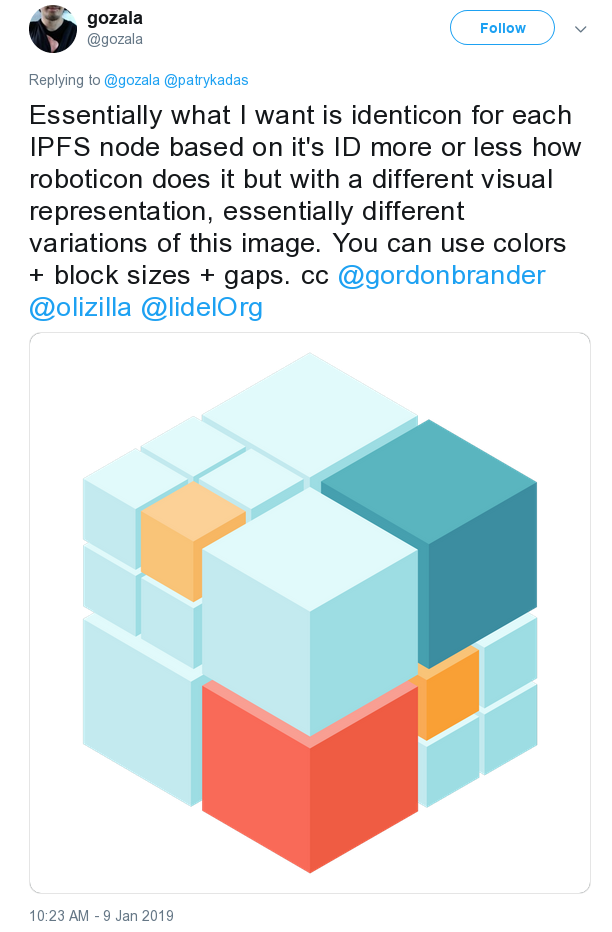Some cool mockups from https://github.com/ipfs-shipyard/ipfs-webui/pull/1062#issuecomment-508318007 (Peers screen):
@lidel We can pull the colors from the theme.json in
ipfs-css, but we can't generate the icons in CSS.Here's what it looks like with the theme colors:
I'm wondering if maybe it'd look better with a different style of identicon though. Here's a different type of identicon:
@JustMaier Thank you for prototyping this!
I like first one better right now, but given the IPFS logo is a hexagon, going with hexagons may create better visualization overall. See the original idea by @gozala.
How are you creating those identicons? How fungible is the library? Perhaps we need to create our own generator?







This is a placeholder issue to ensure this fun idea suggested by @Gozala does not get lost:
Click to expand copy of https://twitter.com/gozala/status/1083066763661570048
[](https://twitter.com/gozala/status/1083066763661570048)If such thing exists, we could display it on the status page to make it feel more personal and help to identify node at a glance:
ps. if someone decides to pick this up and create the "ipfs-identicon" library that generates unique SVG for PeerID (or CID/multihash), some cool resources are in the twitter thread.